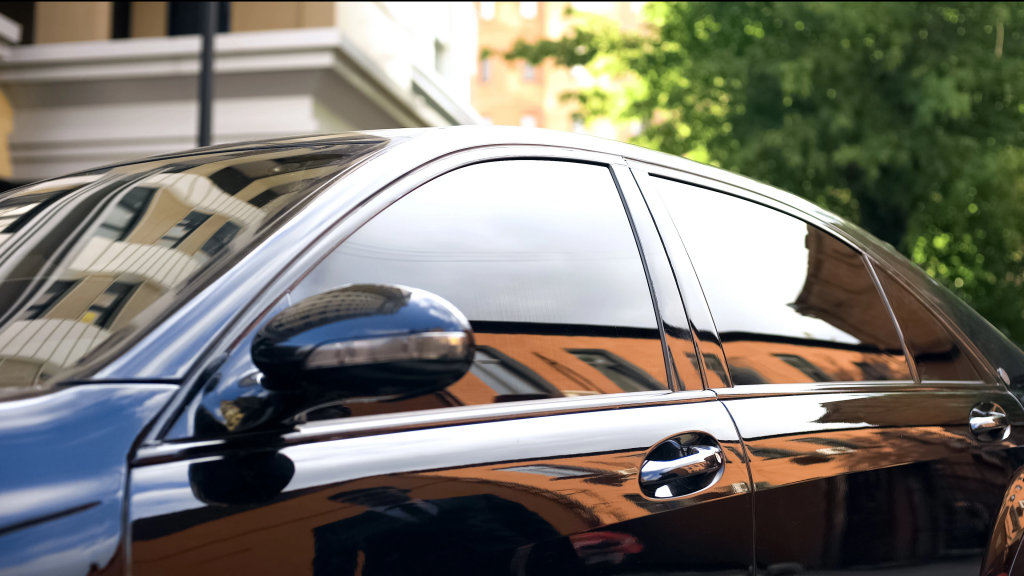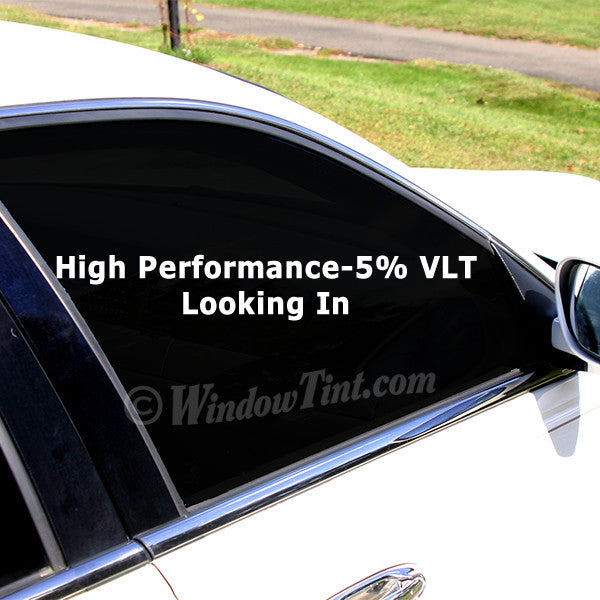Every little thing You Need to Know Concerning Automobile Window Tinting for Your Car
Auto home window tinting is a useful improvement for numerous lorry owners. It offers advantages such as increased convenience and energy effectiveness. Different tint movies satisfy different needs and choices. Nevertheless, understanding lawful policies and selecting the best tint portion is crucial. The installment procedure and proper upkeep likewise play substantial functions in guaranteeing the long life of the tint. What other aspects should one consider before making a choice on home window tinting?
Benefits of Automobile Home Window Tinting
Although some car proprietors may ignore it, automobile window tinting deals numerous advantages that enhance both the driving experience and the car's long life. One of the main advantages is the reduction of heat buildup inside the lorry, permitting an extra comfy trip, especially during heat. This can lead to decreased dependence on cooling, improving gas efficiency.Additionally, home window tinting provides defense against damaging UV rays, which can cause skin damages and fade indoor materials with time. By blocking these rays, the color assists preserve the automobile's inside and preserve its resale value.Moreover, colored home windows can enhance personal privacy and protection, as they make it a lot more tough for outsiders to see inside the car. This included layer of defense can prevent potential theft. In general, automobile window tinting functions as a sensible investment that adds to the lorry and both convenience's total well-being.
Kinds Of Home Window Color Films
When thinking about car window tinting, vehicle owners come across a range of window color films, each made to fulfill details requirements and choices. The very first classification is colored home window movie, which gives a standard degree of personal privacy and UV protection while being affordable. Next, metalized movies integrate little metallic fragments, mirroring warmth and boosting longevity, although they might conflict with electronic signals.Ceramic movies are another option, understood for their exceptional warm denial and quality, providing high efficiency without signal disturbance. Hybrid movies combine characteristics of dyed and metalized movies, striking an equilibrium between price and performance. Each kind of home window tint film provides one-of-a-kind advantages, allowing vehicle owners to select based on their certain needs, such as warm appearance, budget plan, and control considerations. Recognizing these alternatives is necessary for making an informed choice pertaining to car window tinting.
Recognizing Lawful Regulations
When thinking about car home window tinting, it is essential to comprehend the lawful guidelines that govern color darkness restrictions and windshield tint needs. These guidelines can vary significantly from one state to another, influencing what is acceptable for car proprietors. Familiarizing oneself with these legislations assurances compliance and helps prevent potential fines or charges.
Tint Darkness Limitations
Just how can vehicle owners guarantee they continue to be compliant with regional laws relating to window tinting? Comprehending color darkness limits is essential. Each state has particular regulations that determine the permissible levels of darkness for home window colors, which are measured by Visible Light Transmission (VLT) portions. Typically, front-side windows must permit a greater percentage of light contrasted to back windows. Some states may enable just 30% VLT for front home windows, while the back windows might be allowed to have especially darker colors. To assure conformity, lorry owners need to consult state standards or regional police for exact information. Additionally, certified tinting professionals can provide insights about lawful limitations, making sure that vehicle owners make educated decisions.
Windscreen Color Regulations

State-Specific Regulations
Steering through the landscape of state-specific laws pertaining to auto home window tinting requires careful interest to information, as laws can vary significantly from one state to one more. Each state has its own collection of policies controling allowable color percents, sorts of materials, and placement on automobile home windows. Some states allow darker tints on back home windows while prohibiting them on front windows, while others have stricter general limitations (automotive window tinting clinton township). In addition, certain states mandate the usage of details materials or need accreditation from installers. Failing to follow these guidelines can result in fines or the requirement to remove non-compliant tint. Subsequently, automobile owners need to consult their state's Division of Electric motor Autos or pertinent authority to guarantee check out this site adherence to local legislations
Picking the Right Color Percentage
When picking the ideal color percent for a vehicle's home windows, one should think about various variables that influence both appearances and capability. Tint percents typically range from 5% to 70%, with lower portions supplying darker tones and greater percentages allowing a lot more light in. A darker tint can enhance personal privacy and reduce glare, while a lighter tint can preserve presence and abide by legal restrictions.Furthermore, personal preference plays a considerable duty in this decision. Some people may like the streamlined appearance of darker colors, while others may prefer a much more open, ventilated feel. In addition, the car's function should be taken into account; for example, those using their automobiles for commercial functions could go with lighter tints to keep a professional look.Ultimately, the appropriate color portion balances personal design, convenience, and adherence to local guidelines, ensuring an enjoyable tinting experience.
The Installation Refine
A successful setup of home window color needs mindful focus to information and the right tools. The process commonly begins with extensive cleansing of the windows to eliminate dust, dirt, and debris, ensuring appropriate bond of the film. Once the surface areas are prepared, the installer measures and reduces the tint movie to fit each window accurately.Next, the movie is positioned on the glass, typically utilizing a remedy to promote simple adjustment and stop air bubbles. Warmth is sometimes related to the movie to adhere it to the window's curves, boosting its look and durability. After confirming a smooth fit, the installer carefully trims any kind of excess film along the edges.Finally, the installer look for flaws and verifies all sides are safe and secure. This meticulous technique is vital not only for looks however additionally for achieving the wanted performance advantages of home window tinting, such as UV defense and warm reduction.
Upkeep and Treatment for Tinted Windows
Correct upkeep and care are important for maintaining the stability of tinted windows. Efficient cleansing strategies, the avoidance of hazardous chemicals, and normal inspections for damage play crucial roles in making sure longevity. By adhering to these guidelines, lorry owners can keep the aesthetic and useful benefits of their home window color.
Cleaning Strategies for Tint
Preserving the quality and durability of tinted windows needs specific cleaning methods customized to the movie's delicate surface. It is vital to make use of a soft microfiber cloth to prevent damaging the tint while cleansing. A gentle option of water and a couple of drops of light recipe soap can successfully remove dirt and gunk. It is advisable to apply the cleaning option to the towel, as opposed to directly onto the tinted surface area, to prevent wetness from seeping into the edges of the film. Mild, round activities ought to be utilized to cleanse the home windows thoroughly. Routine cleaning helps preserve exposure and prevents accumulation, ensuring that the tint continues to be in prime problem over time. Following these techniques will extend the life of tinted windows.
Avoiding Damaging Chemicals
Lots of house cleaning products are effective on various surface areas, they can position significant dangers to tinted windows. Chemicals such as ammonia, bleach, and particular solvents can weaken the color film, causing discoloration and peeling. People should go with pH-balanced cleansers particularly designed for colored home windows. In addition, making use of soft microfiber fabrics will certainly aid avoid scratches and maintain the color's honesty. Normal maintenance is important; as a result, preventing extreme scrubbing or abrasive materials is important. It is a good idea to read product labels thoroughly to validate compatibility with window tints. By choosing the best cleansing options and devices, vehicle owners can preserve the appearance and performance of their colored windows, ensuring a longer lifespan and top performance.
Inspecting for Damage
Normal inspections of tinted home windows are very important for recognizing any indications of damage that may endanger their effectiveness and appearance. Owners need to try to find bubbling, peeling, or staining, as these issues can suggest bad installation or exposure to hazardous aspects. It is suggested to check the edges of the movie where peeling off might examine and start for any kind of scrapes that could impact exposure. In addition, ultraviolet (UV) rays can cause the tint to break down with time, so monitoring its efficiency in blocking UV light is important. If any type of damages is discovered, punctual activity should be taken, which may consist of specialist repair service or substitute. Keeping colored home windows not just boosts aesthetics but also guarantees continued security for both guests and the lorry interior.
Common Myths About Window Tinting
What misunderstandings surround window tinting for cars? Lots of individuals believe that all window tints are illegal, yet regulations differ by state, enabling certain levels of tinting. An additional typical misconception is that darker tints block more warm; nevertheless, the effectiveness of window movies relies on their modern technology instead of darkness. Some people also think that window tinting is solely for aesthetic appeals, neglecting its benefits, such as UV protection and glow reduction. In addition, many assume that window tinting will harm their vehicle's glass, but properly applied tints can really improve glass resilience. Finally, there is a belief that window tints block exposure, yet high-grade films are made to maintain clear sightlines while offering privacy. Recognizing these misconceptions helps consumers make informed choices concerning home window tinting, ensuring they enjoy the complete array of benefits it supplies.
Frequently Asked Inquiries
How Long Does Home Window Tinting Typically Last?
The long life of home window tinting varies based on aspects such as installation high quality, movie type, and environmental problems. Generally, high-grade tint can last anywhere from five to 10 years prior to requiring replacement or reapplication.
Can I Eliminate Home Window Color Myself?
Removing window color oneself is feasible, though it may be challenging. People must use a warm resource and sticky eliminator to relieve the procedure, yet caution is suggested to avoid harming the lorry's glass or inside.
What Tools Are Needed for Do It Yourself Window Tinting?

Will Window Tinting Damage My Cars and truck's Glass?
Home window tinting, when applied correctly, typically does not harm a car's glass. Inappropriate installation or low-quality films may lead to peeling, gurgling, or scratching, potentially jeopardizing the honesty of the glass over time.
Can Tinted Windows Impact My Automobile's Resale Worth?
The impact of tinted home windows on an automobile's resale value can differ. While some buyers appreciate the included personal privacy and UV security, others may see it as a prospective problem, potentially affecting resale positively or adversely. When considering vehicle window tinting, vehicle owners come across a selection of window color films, each designed to meet specific needs and choices. When thinking about vehicle home window tinting, it is critical to recognize the legal regulations that control color darkness restrictions and windscreen tint needs. Commonly, front-side home windows need to permit a greater portion of light compared to rear windows. Some states might allow only 30% VLT for front windows, while the rear windows might be permitted to have notably darker tints. Some states allow darker tints on back windows while prohibiting them on front home windows, while others have more stringent overall restrictions.